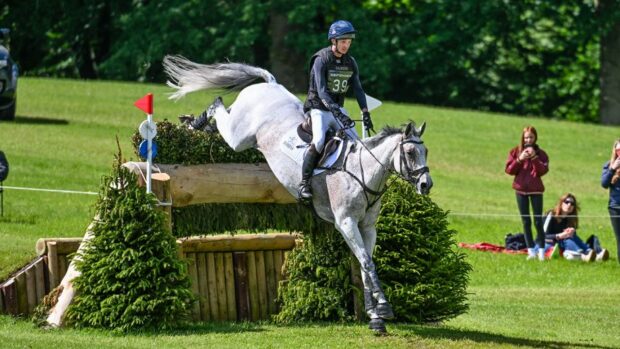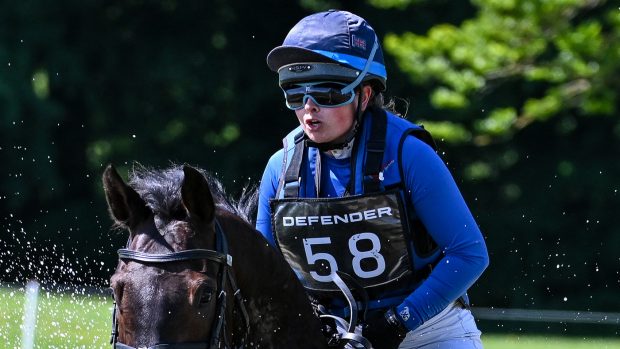With the demise of the roads and track and steeplechase, the responsibility of warming up for the cross-country now lies in the hands of the riders. However, as the course designer, I am conscious of the need to ease competitors into their task and the opening fences on this year’s course have been designed with this in mind.
The opening HSBC Estates Division Park Seat and The Poskitt Carrot Stand remain straightforward fences to help riders establish rhythm and balance early on in the course.
The Casalier Bee Farm combination has been altered from last year and asks riders to engage a degree of intelligence and a certain amount of control with a choice of distances between the first and second elements.
The Askham Bryan College Wall may look unchanged, and is still a narrow fence so early on in the course, but the approach line has been made a little easier.
The massive birch fence from 2004 has been removed and riders have the luxury of an uninterrupted woodland gallop to The Smiths Gore Toadstools, which should not trouble anyone unduly, although the decoration and carpentry is worth admiring on the course walk.
The Express Cafes T-Bar is the first serious fence on the course. This two-part combination is a test of scope, obedience and balance. The initial log has had spread added to it, requiring power and some pace, while the following left turn over undulating ground to the downhill T-Bar demands quick reactions and good control.
The National Veterinary Services Trailer is to be enjoyed before horses enter the park via the South Drive fences. Here a four-part combination, The Rensburg Willow Baskets, tests accuracy and quick footwork before moving on to The Grainfarmers UAP Open Ditch – a massive but inviting birch standing at the maximum height for brush fences of 1.40m.
Riders tend not to be too keen on The Camerons Brewery Owl Log, which sits under a tree on their route to the first water complex, as it requires them to slow down and show a degree of caution. This, however, is exactly why it remains in their way.
At the first of the course’s water complexes, The Snuggledown Wash & Dry Me Lower Pond, there is a new addition in the cattle feeder, which is designed to ensure that riders can make a controlled turn to the now familiar wall and viaduct preceding their decent into the pond. The exit route, the separately numbered Ian Barker Electrical Thumb Stick offers two choices, depending on how well the previous fences have been negotiated.
A new and intense stretch of the course follows. There is no let-up fence before entering woodland surroundings to negotiate the three-part bounce fence, The Bishop Burton College Cheese Table, which is followed by a triple bar and a roll top that demand complete straightness. Any deviation from the planned line and either of these fences could be by-passed at considerable cost. A slow but safe alternative is there for those who have problems.
At the next, The Central Caterers Kitchen’s Complex, there is a choice of routes and distances from the trakehner to the old wall and then on to a resurrected water fence from many years ago. This has been the scene of much clearance work during the winter months and it is hoped will make for interesting viewing while continuing to test horse and rider.
A single hanging log appears at The Yorkshire Show Road Crossing, but riders will need to remain focused as this is preceded by a steep hill, and it is important that horses do not become flat footed or lack power after the climb.
The Yorkshire Post Pheasant Feeder offers horse and rider some breathing space and I do not anticipate that The GNER Railway combination of train and crossing gates will prove too problematic. The Thorpe Park Orchard View that follows should jump well as long as riders remember that horses jump ditches with ease if presented on a forward stride.
The next challenge is the Snuggledown Duck Down Pond Fences, which have a beer barrel theme to them this year. They should ride well for those who hold their line through the water, although a step out of water on a related distance is always more difficult to ride than it may initially appear.
Beneath the main arena sit The Komfi Memory Foam Triple Challenge Flower Boxes. Unchanged from 2004, these decorative fences are wide, and set at maximum height. The bending lines needed to jump them correctly provoke much thought, but historically they jump well.
Riders can now begin to think about the finish as the third last fence, The Howcrofts Decorators Interchange, made up of a big log over a similarly big ditch, should hold no fears at this stage in the course.
However, they shouldn’t relax too early as one last problem presents itself at the penultimate fence, The Ripon Farm Services Rhombus. A left or right hand corner, made bigger with the allowable extra 20cms of birch, sits on a slope and follows a choice of palisades which will determine which of the two corners the riders jump. The quick route is risky, but valuable seconds can be saved. This final thought provoking question will ensure riders keep an eye on their petrol tank around the course to ensure that they are not running on empty at the end.
The new loop in the middle section of the course has extended the distance and makes the inviting T & G Clothing Hunting Hedge the final fence.
Whatever the result, any partnership that passes through the finishing flags without jumping penalties will undoubtedly be on course for an exciting future in the sport.



